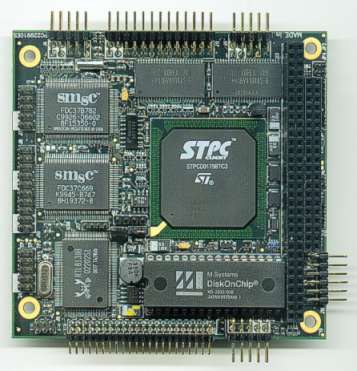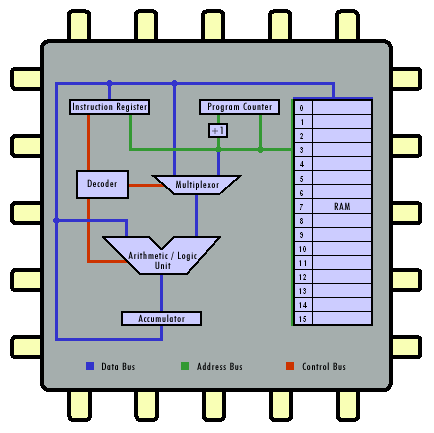The heart of a computer is the central processing unit or CPU. This device contains all the circuitry that the computer needs to manipulate data and execute instructions. The CPU has millions and millions of transistors in its circuitry.
The CPU is composed of five basic components:
RAM
registers
buses
ALU
Control Unit

RAM:
RAM created from combining latches with a decoder. The latches create circuitry that can remember while the decoder creates a way for individual memory locations to be selected.
Registers:
Registers are special memory locations that can be accessed very fast.
Three registers are shown:
Instruction Register (IR)
Program Counter (PC)
Accumulator.
Buses:
Busses are the information highway for the CPU. Buses are bundles of tiny wires that carry data between components. The three most important buses are the address, the data, and the control buses.
ALU:
ALU is the number cruncher of the CPU. The Arithmetic / Logic Unit performs all the mathematical calculations of the CPU.
The ALU can add, subtract, multiply, divide, and perform other calculations on binary numbers.
Control Unit:
This component is responsible for directing the flow of instructions and data within the CPU. The Control Unit is actually built of many other selection circuits such as decoders and multiplexors. In the diagram above, the Decoder and the Multiplexor compose the Control Unit.
 ශිල්ප 64
ශිල්ප 64